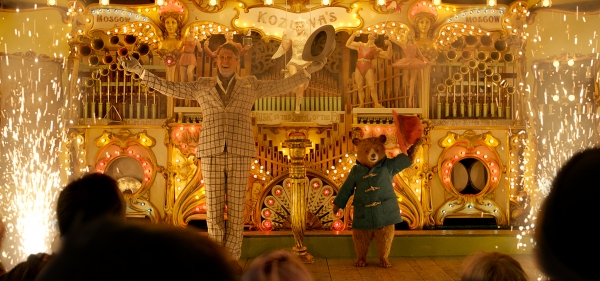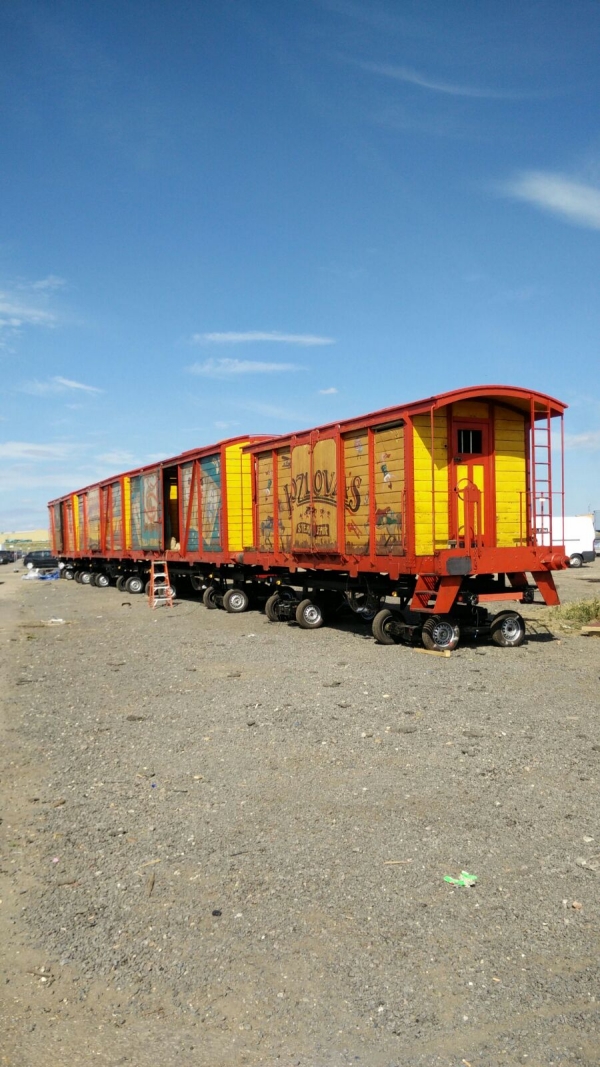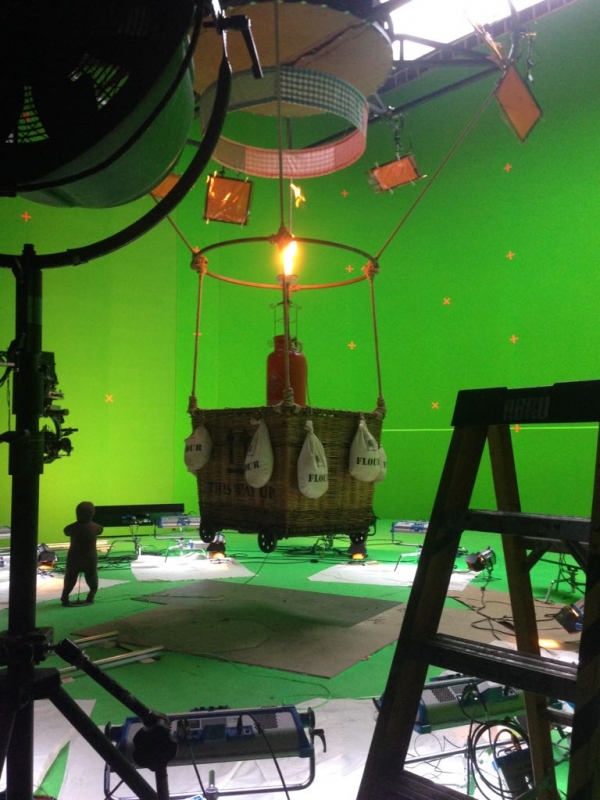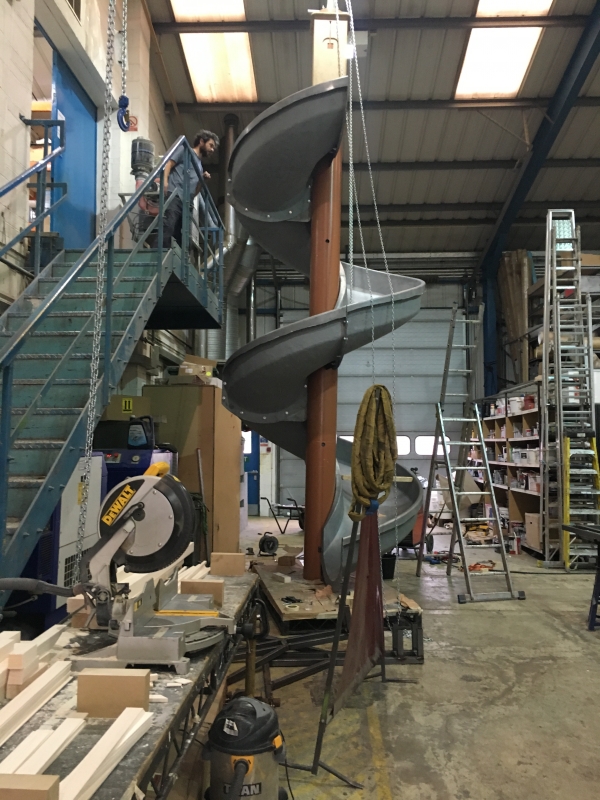Special Effects on Paddington 2
thecallsheet.co.uk spoke with Artem's Mike Kelt about the special effects in Paddington 2.

What was the original brief on special effects for Paddington?
The brief starts with the delivery of the script, which I would read and break down into all the possible SFX – even those that I would not think we would eventually get involved with. This is to get an overall feel for the story and all the possible solutions to the way it may be achieved. After this has been discussed a budget is formulated that would cover the requirements and some negotiation may take place! This then forms the core of the ‘brief’. However, and inevitably, there are changes along the way – often major ones.
In addition to the SFX brief on Paddington, there was a ‘scenic prop’ brief, which covered some of the more ambitious set pieces and action props, and this was considered alongside as often there was a crossover between the two. To some extent the onus is on coming up with solutions to script challenges and this often drives the workload.
Could you give us an idea of the range of the work you did on Paddington 2?
The range of SFX work went from the fairly standard floor effects of rain, mist, wind, snow, pyrotechnics, through to huge mechanical rigs that formed the chassis to a train on the backlot at Leavesden studios, and could be remotely controlled using electric motors which worked with both the scenic carriages mounted on them and the post production that combined everything into a background which was added at Framestore. The range of scenic prop work varied greatly, from many fake marmalade sandwiches, to giant clock mechanisms, to escape chutes, to massive prison washing machines, and with all these and more we worked very closely with the Design department (Production Designer Gary Williamson, Supervising Art Director Patrick Rolfe).

Can you give an example of the level of work on one of the most complicated special effects in the film?
The train carriages were the biggest single requirement. Five full-sized train chassis were designed and built. These connected together and all had electric power units that directly drove the wheels and were computer controlled so that as many or as few as necessary could be driven in sync. These could drive back and forward, but crucially had to drive diagonally for some shots as the trains moved apart. (The other train was a real steam locomotive!)
How closely were you working with cast members in this film?
In the planning stages there was no significant work with actors, other than with the virtual Paddington! When it came to the shoot of course there was interaction with everything we built, some of which was of course a matter of safety, like building the hot air balloon basket and flying it in the studio and on location from various mechanical rigs and cranes. Or the simpler breakaway rolling pin that Brendan Gleeson had to snap in a moment of suppressed fury! The cast were all lovely to work with, which I think you would imagine watching the film, and very respectful of what was being done for them.

Which effect in Paddington 2 are you most proud of and why?
It is difficult to come up with one particular item. The train rigs were perhaps the most challenging, but one of the most fun was the spiral escape chute leading to the prison laundry. There was initially some uncertainty about what this actually was as it was not clear in the script. We suggested a solution that was agreed to, and did the design work, but it was fairly late being confirmed and had to be built in just over a week. Bearing in mind this was about 6m high and had to cope with 3 actors hurtling down it for real, it had to be structurally sound, and safe. The final result was great, and rather fun to test! It would have been nice to build it into our offices, but like so much else in this industry it ended up in a skip!
What was the film schedule like?
Most film schedules change; that is the nature of the beast. This schedule morphed a lot as Paul King, the director, came up with new and funnier ideas. These turned out to be absolutely correct changes once you see the film, but at the time one felt it was an uphill battle to cope.

What was the biggest challenge?
Time and deadlines! The biggest challenge was a deadline driven one as well as a technical one. There is a steam organ in the story, and one was located that almost fitted the bill, but needed additions, and this was shot on location. It then had to be reproduced in every detail as a scenic prop to be placed in the train carriage, and there were those who thought it was an impossible task! The main issue was that only two weeks was left to do the work, and that happened to fall over the Christmas/New Year holidays! A bit like war breaking out, all leave was cancelled, voluntarily I might add, and the team got down to using every trick in the arsenal, from 3D printing, to robot sculpting and machining, as well as the more traditional modelling, casting, and fabrication. We made it and it was installed the night before the shoot! It’s an important scene in the story, with Hugh Grant (as the villain) interacting with it.
For further information about Artem, please visit their website to read about past projects and more: http://www.artem.com/
Mike Kelt is the CEO of Artem and one of its founders. He cut his teeth in theatre as a designer and production manager. Before Artem he worked at the BBC on iconic shows such as Dr. Who and A Hitchhiker’s Guide to the Galaxy. In 2012 Mike oversaw the creation of over 20 major physical special effects in the opening and closing ceremonies of the Olympics and Paralympics. More recent projects include Macbeth starring Michael Fassbender and Marion Cotillard, Danny Boyle’s T2 Trainspotting, Paddington 2 and the Foreigner starring Jackie Chan. Mike is a director of UK Screen and a council member of BSAC (British Screen Advisory Service). Mike was awarded an Honorary Degree by the University of Hertfordshire for “outstanding achievement in Special Effects at home and abroad”.